After more than 24 hours of travelling I stepped off the tiny speedboat taking me from the mainland, Kuala Terengganu, to Lang Tengah, a two-mile-long island which from a distance looks like a castaway island. I traveled from London Heathrow to Kuala Lumpur where I stayed a night at the airport hotel, Sama Sama. I lay in bed for hours unable to sleep from excitement. Before I reached the airport in London, I was nervous, as I have never travelled so far away on my own. Once I went through security, there was no turning back and I calmed down.
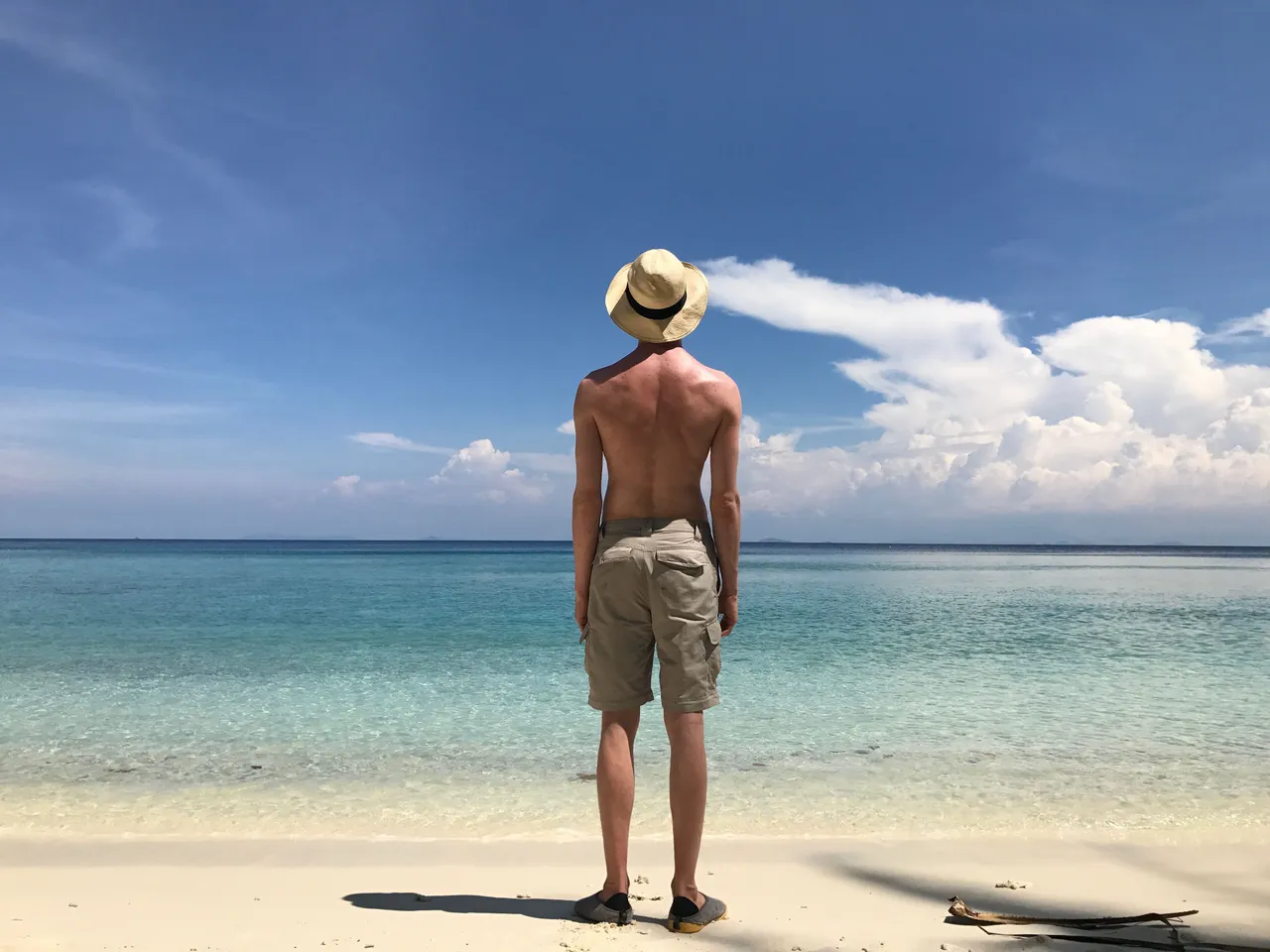
This is me looking out to the ocean from Turtle Bay, Lang Tengah.
Instantly my sneakers were soaked since the boat could only go so far as to dropping me off on Turtle Bay, the private beach on the south of the island which belongs to the Lang Tengah Turtle Watch Project. I met up with one of the founders of this conservation project a month prior to departing in a small café in West London. I found out about the project through a friend and I was given the project founders’ contact information. I bought everything I needed from the handbook’s packing list in the span of two days and now I’m here.

The speedboat which brought me to Turtle Bay, Lang Tengah.
Volunteers from the project came out from the dense rainforest to greet me on the beach. Through a short entrance into the rainforest which didn’t agree with my height, I was taken to camp which is less than twenty steps away from the ocean. There isn’t a space anywhere on camp surrounded by four walls. The sleeping hut contains about a dozen beds and the kitchen looks spacious and well-equipped. Beside the sleeping hut is a well from which water is collected and filtered in the kitchen for drinking. There is also a bamboo screen with a bucket to fill with well water for bucket showers. Most volunteers were sitting in the “dining room”, a picnic bench with an elaborate mosquito net. I was provided with toast, chocolate spread and peanut butter.
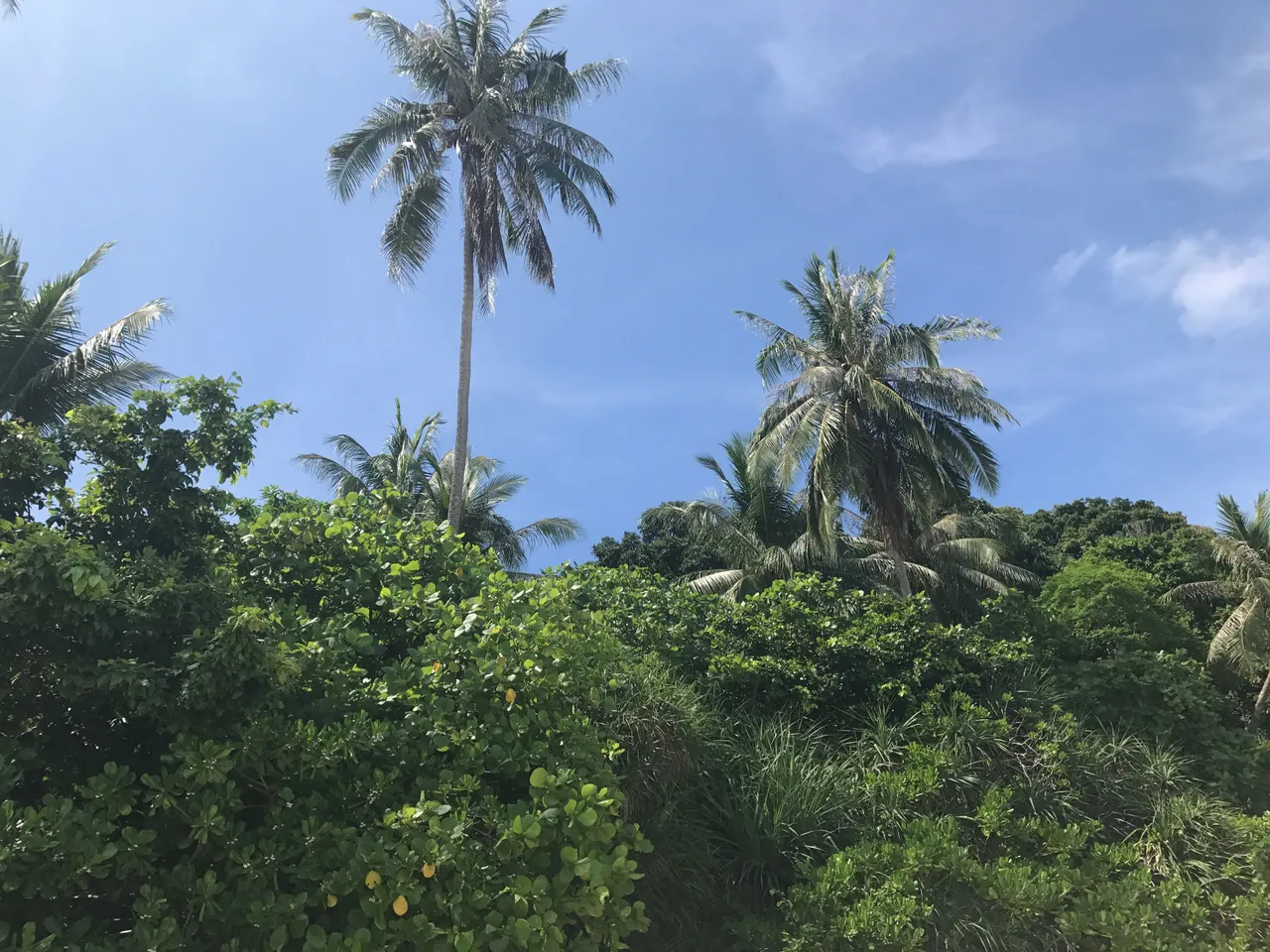
Entering the dense jungle right before reaching camp.
I had to sit through a risk assessment where I was told of the dangers on the island. I signed my name beside every risk on this chart listing every possible crisis in order to remove all liability from the project incase anything happens to me. I was also shown images of dangerous animals to be vigilant of. There was the Vietnamese centipede, triggerfish, blue banded sea krate, stonefish and more. The stonefish is the most poisonous fish, but also one that’s extremely rare to encounter. They hide in dark crevasses waiting to snatch fish that swim by. To avoid them I was told never to touch coral when snorkeling.

Camp looking all lived in!
I was also given a presentation about turtles. Lang Tengah has only seen hawksbill and green turtles on and around the island for years. Leatherback turtles have been extinct from the area due to poachers. The mission of this conservation project is to patrol the island at night and hopefully come across a turtle before a poacher does. Apparently there is a poacher who lives on the island and there have been several confrontations with him.
Hawksbill turtles have a serrated carapace and are much smaller than green turtles. Green turtles derive their name from the layer of fat beneath their carapace. Only one in one thousand turtles survive, and turtles lay around one hundred eggs in one laying.
I finally chose my bed in the sleeping hut, unwrapped the mosquito net over it and slept off the fatigue which swept in after my adrenaline faded. Apparently volunteers tried to wake me to go snorkeling but I couldn’t wake up. When I finally did, just before dinner, I didn’t even know that people were trying to wake me. I must’ve been so tired.
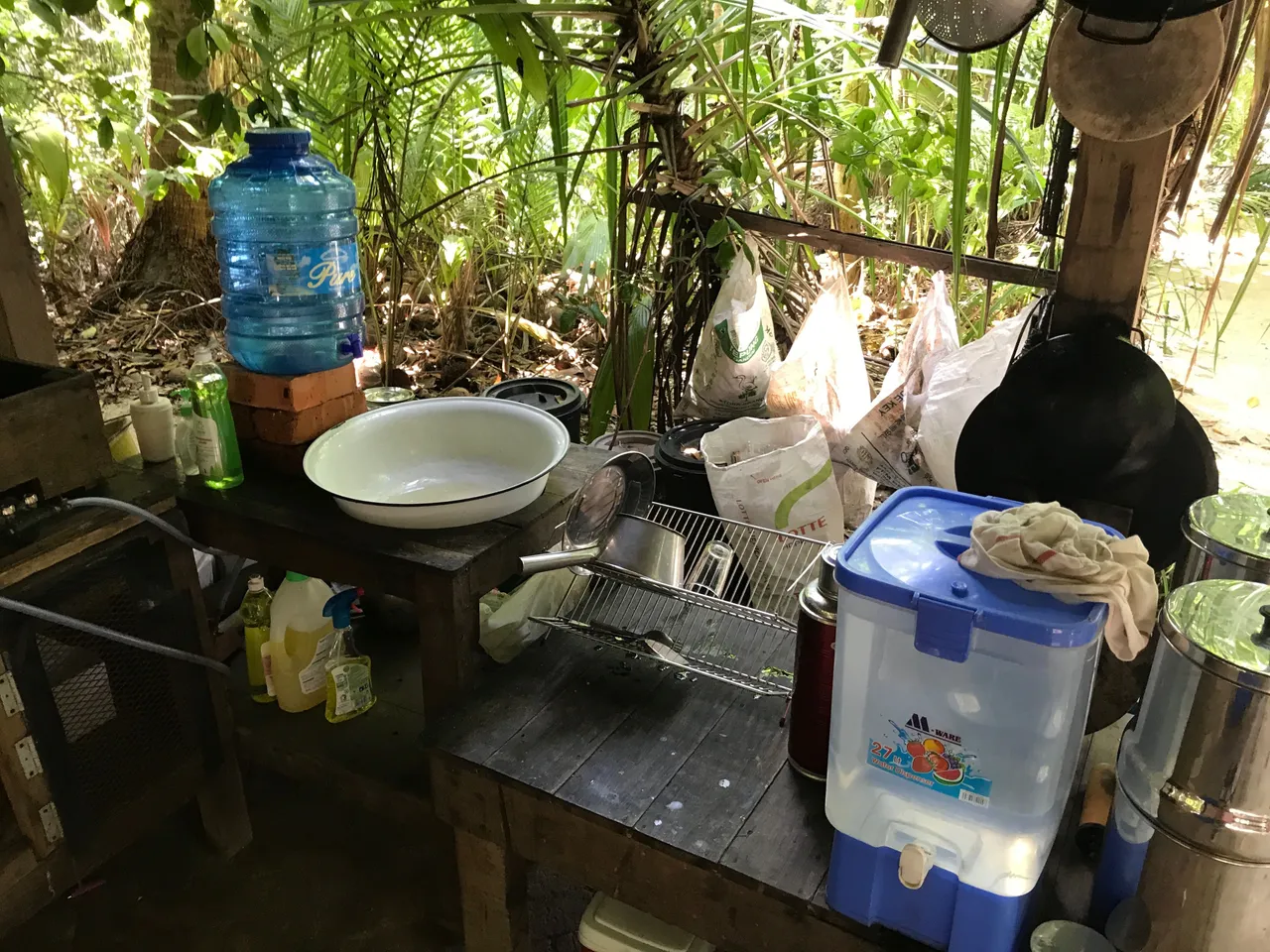
The kitchen. To the right where you see two metal containers is where we pour well water for it to be filtered. In the clear container is filtered water for us volunteers! There's the sink too.
Because the camp doesn’t have a fridge, there is no meat or fish on camp. Pasta and rice are the primary meals on camp. In the Lang Tengah Turtle Watch handbook, it said that fishermen sometimes visit camp to try and sell fish; I took extra money out in Kuala Lumpur for this reason, because on Lang Tengah there are no ATMs. There are a few hotels, many out of business. One is called D’Coconut and the other one is called Summer Bay. There are also no cars and paved roads. It feels tranquil, the way island life should be!
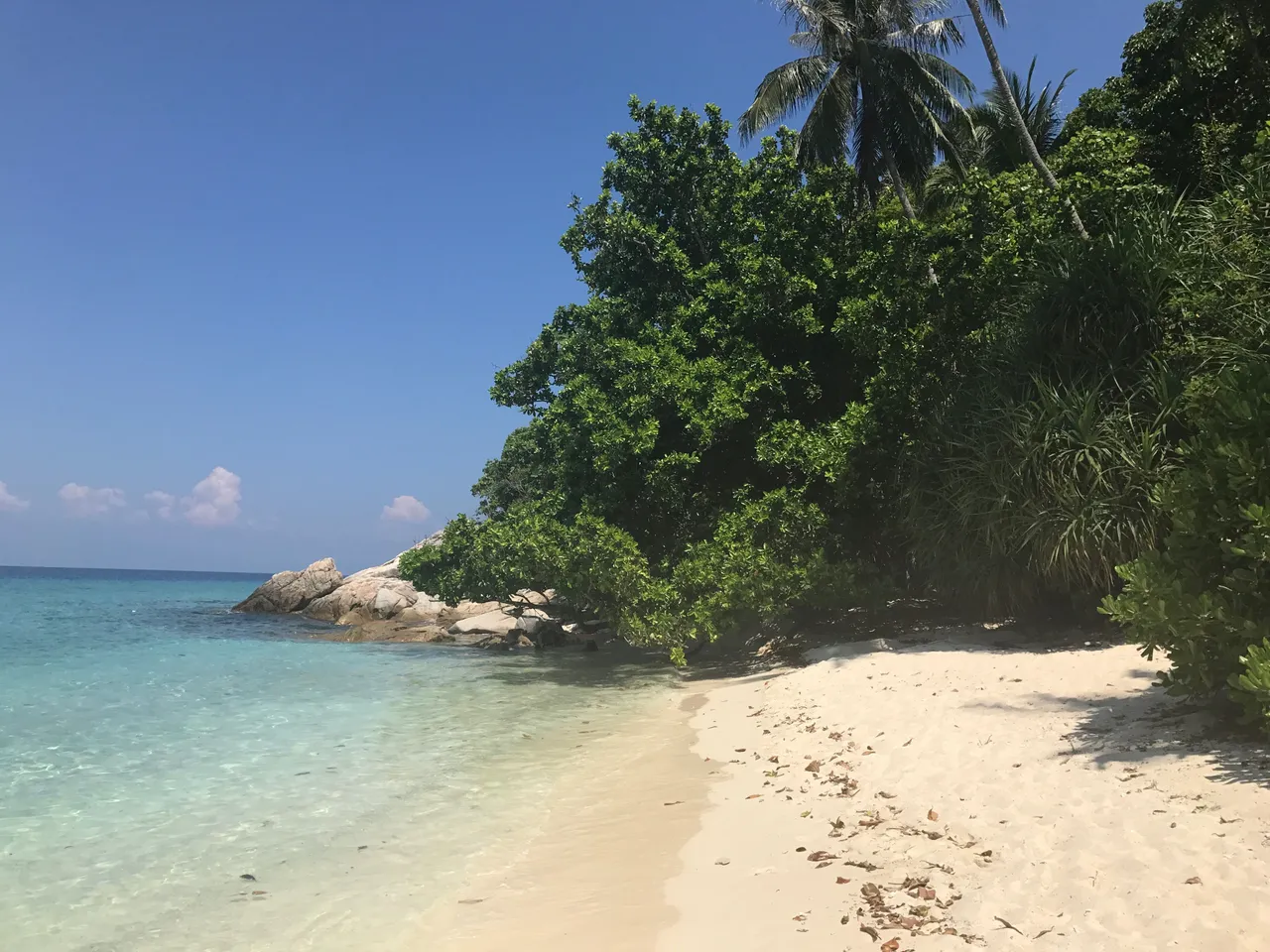
Hidden inside the dense vegetation is a hammock looking out into the crystal clear water! Walking in this direction of Turtle Bay takes you to big beautiful rocks.
My patrol partner, Faye, took me on an island tour from 01:00AM – 04:00AM, showing me where I must go during my patrols and for how long I must stay on each part of the island. We used red light torches on the beaches because white light misguides turtles. In cities like Kuala Terengganu turtles have come out from the water and been attracted to traffic lights, bringing them onto roads with cars and having them lay their eggs in the most inconvenient spots. Naturally the ocean is the brightest point, so without any manmade light, like on our private beach, Turtle Bay, the turtles lay where the hatchlings are able to run straight into the ocean.
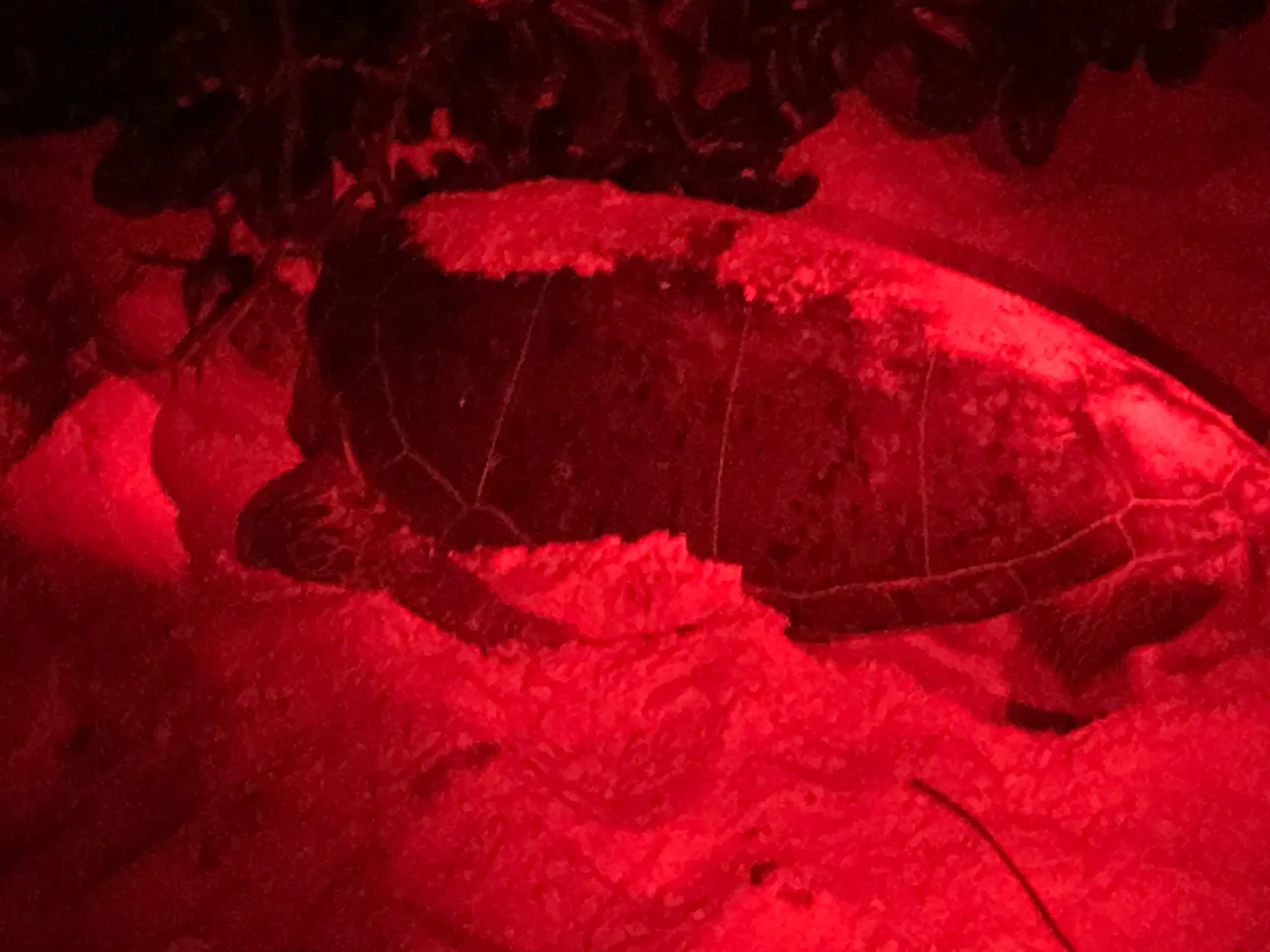
Ellie the green turtle.
My highlight was coming across Ellie the green turtle in the middle of body pitting. We knew her name because she has been tagged on her flipper. The tags allow biologists to distinguish the turtles for data collections. There were many tourists surrounding the turtle, too. We had to move the crowd back, forbid flash photography, as it would discourage the turtle from laying, and make sure people were silent because loud sounds can also send a turtle dashing for the ocean. And before the poacher could arrive, Faye and I phoned the camp leader, KL, and she came with the other volunteers with a bucket to extract the eggs. We took out over one hundred eggs from the egg chamber and the bucket, now full with them, was taken to our private beach, Turtle Bay, where a manmade egg chamber was created for them. I stayed behind and watched Ellie the green turtle create false body pits to fool prey. During the laying of the eggs, turtles enter a trance where they become less sensitive to sound and red light. This is when we dig next to the turtle to take out the eggs before she fills the egg chamber and creates false body pits. It was a spectacular sight watching Ellie flipper off into the ocean. What a first day that was!
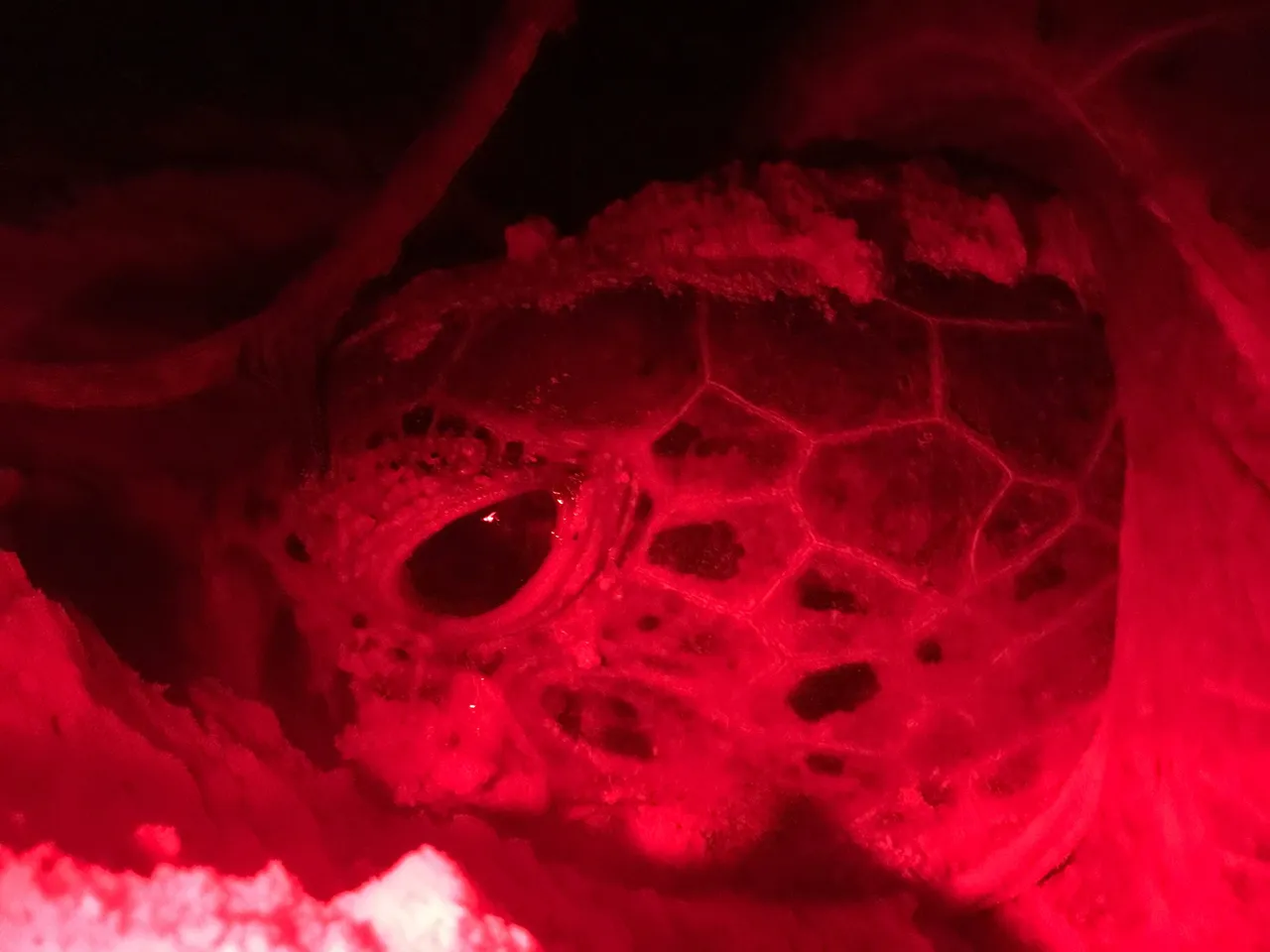
A close up of Ellie's face.
Thank you for reading about my first day on Lang Tengah, I hope you guys enjoyed it!
